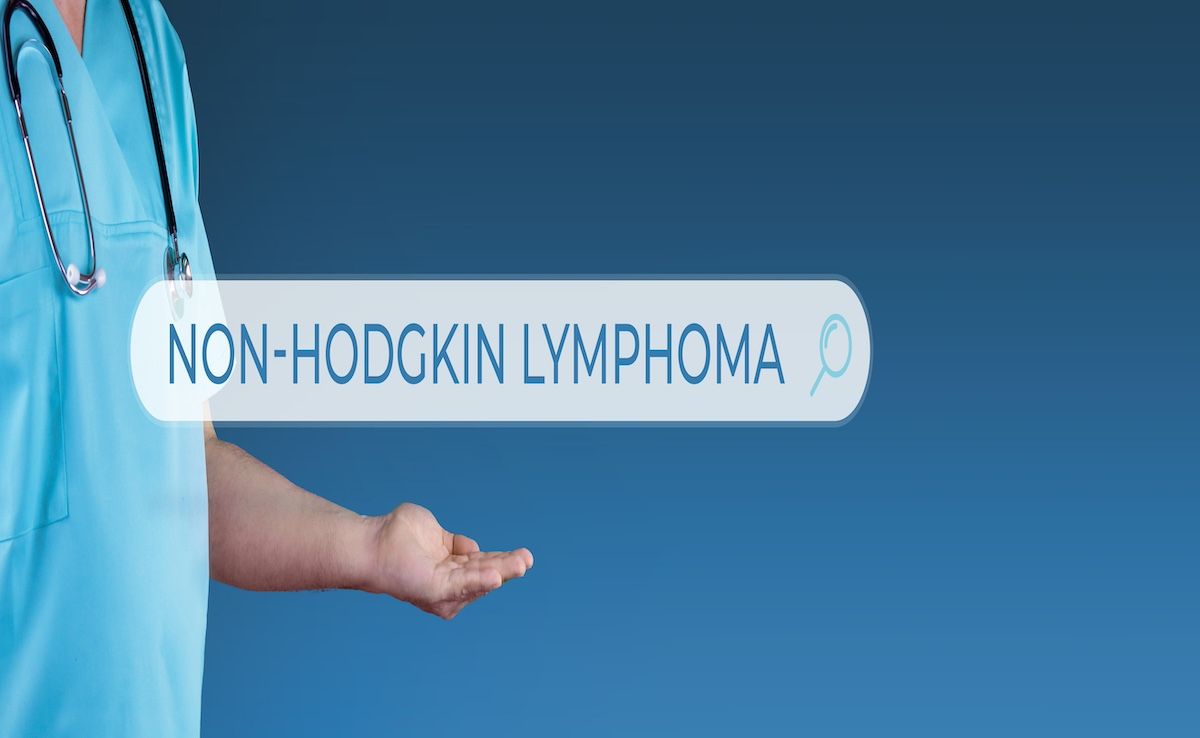- Center on Health Equity & Access
- Clinical
- Health Care Cost
- Health Care Delivery
- Insurance
- Policy
- Technology
- Value-Based Care
Drivers of Aggression Identified in Double-Expressor DLBCL
Investigators say they may have found a new therapeutic target for patients with double-expressor diffuse large B-cell lymphoma (DLBCL).
Scientists say they have discovered one reason patients with diffuse large B-cell lymphoma (DLBCL) whose cancers overexpress both MYC and BCL2 have more aggressive cancers. They say increased expression of C-C motif chemokine ligand 2 (CCL2) and C-C chemokine receptor type 2 (CCR2) mediates aggressiveness by increasing M2 macrophage polarization.1 They believe their findings highlight a potentially important new therapeutic target in lymphoma. The report was published in Blood Advances.
The study authors noted that the proto-oncogene MYC and the anti-apoptotic molecule BCL2 tend to be overexpressed in various tumors. About 30% of people with DLBCL have “double-expressor” lymphoma, they said, meaning they have overexpression of both MYC and BCL2.
“Although they do not form a distinct clinicopathological entity, MYC/BCL2 double expression (DE) serves as an independent poor prognostic marker in patients with DLBCL treated with R-CHOP [rituximab pluscyclophosphamide, hydroxydaunoirubicin, oncovin, and prednisone),” they wrote.
Despite that poor prognosis, the investigators said there are no differences in the management of patients with DE-DLBCL, in part because the mechanisms underlying the aggressiveness seen in those cancers is not well understood.
This study's investigators say increased expression of C-C motif chemokine ligand 2 and C-C chemokine receptor type 2 mediates aggressiveness by increasing M2 macrophage polarization. | Image Credit: © MQ-Illustrations - stock.adobe.com

“Understanding the pathobiology of DE-DLBCL is crucial for developing novel therapeutic strategies,” they wrote.
To investigate the question, they analyzed tumors from 14 patients with DE-DLBCL, and 14 patients with DLBCL who were not double expressors. The authors used whole transcriptome sequencing, and found significant differences between the 2 groups.
“Our transcriptome analysis revealed significantly elevated mRNA levels of CCL2 and CCR2 in DE-DLBCLs compared to non-DE-DLBCLs (P adj < .05),” the authors wrote.
Next, they used publicly available datasets and immunohistochemistry and found that patients who were double expressors had heightened levels of M2 macrophages, but diminished T-cell infiltration. They said CCR2 expression was primarily found in tumor-infiltrating macrophages, not in DLBCL cells. Their findings correlated with patient outcomes, including progression-free survival (PFS) and overall survival (OS).
“Increased CCL2 expression, increased CCR2 expression, and the combined high expression of CCL2 and CCR2 were all significantly associated with poor PFS and OS (for CCL2, P = .014 and P = .009; for CCR2, P = .005 and P = .010, respectively; for combined high expression of CCL2 and CCR2, P = .013 and P = .017, respectively),” they found.
The investigators said MYC and BCL2 increased CCL2 through upregulating nuclear factor-κB p65 in DLBCL, and CCL2 in turn promoted M2 polarization of macrophages. The result, they said, is increased aggressiveness of DE-DLBCL cancers.
They said their study points to an “important and targetable” mechanism underlying DE-DLBCL’s aggressiveness. They noted that to date, several different strategies have been tried to improve outcomes in DLBCL, but many have run into roadblocks. Targeting MYC has largely proven ineffective, and the BLC2 inhibitor venetoclax (Venclexta) had an overall response rate of only 18% in patients with DLBCL, although Kim and colleagues said there are ongoing studies looking into whether venetoclax might be more effective in combination regimens.2 They said there is also reason for optimism that chimeric antigen receptor T-cell therapies and bispecific antibodies may prove useful in DLBCL.
“Thus, understanding the tumor immune microenvironment and its regulatory mechanisms is important in lymphoma,” they said. “The findings of this study may provide valuable information for the management of patients with DE-DLBCL using chemoimmunotherapy and immunotherapy.”
References
1. Kim S, Jeong H, Ahn HK, et al. Increased CCL2/CCR2 axis promotes tumor progression by increasing M2 macrophages in MYC/BCL2 double-expressor DLBCL. Blood Adv. Published online September 18, 2024. doi:10.1182/bloodadvances.2024013699
2. Davids MS, Roberts AW, Seymour JF, et al. Phase I first-in-human study of venetoclax in patients with relapsed or refractory non-hodgkin lymphoma. J Clin Oncol. 2017;35(8):826-833. doi:10.1200/JCO.2016.70.4320
